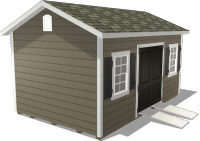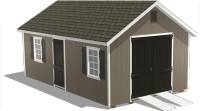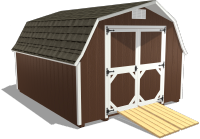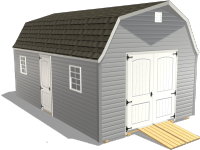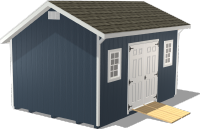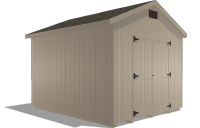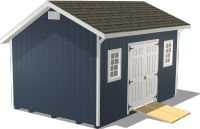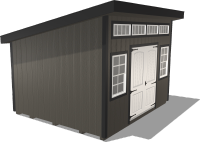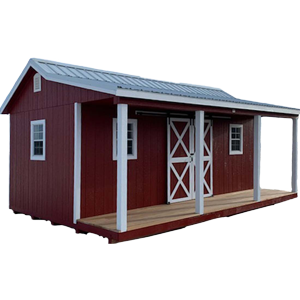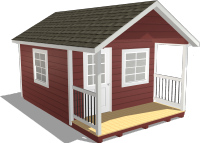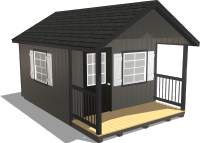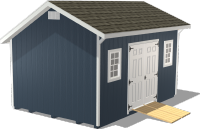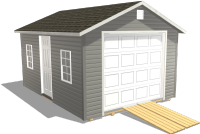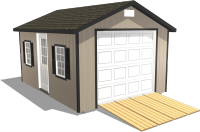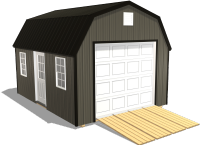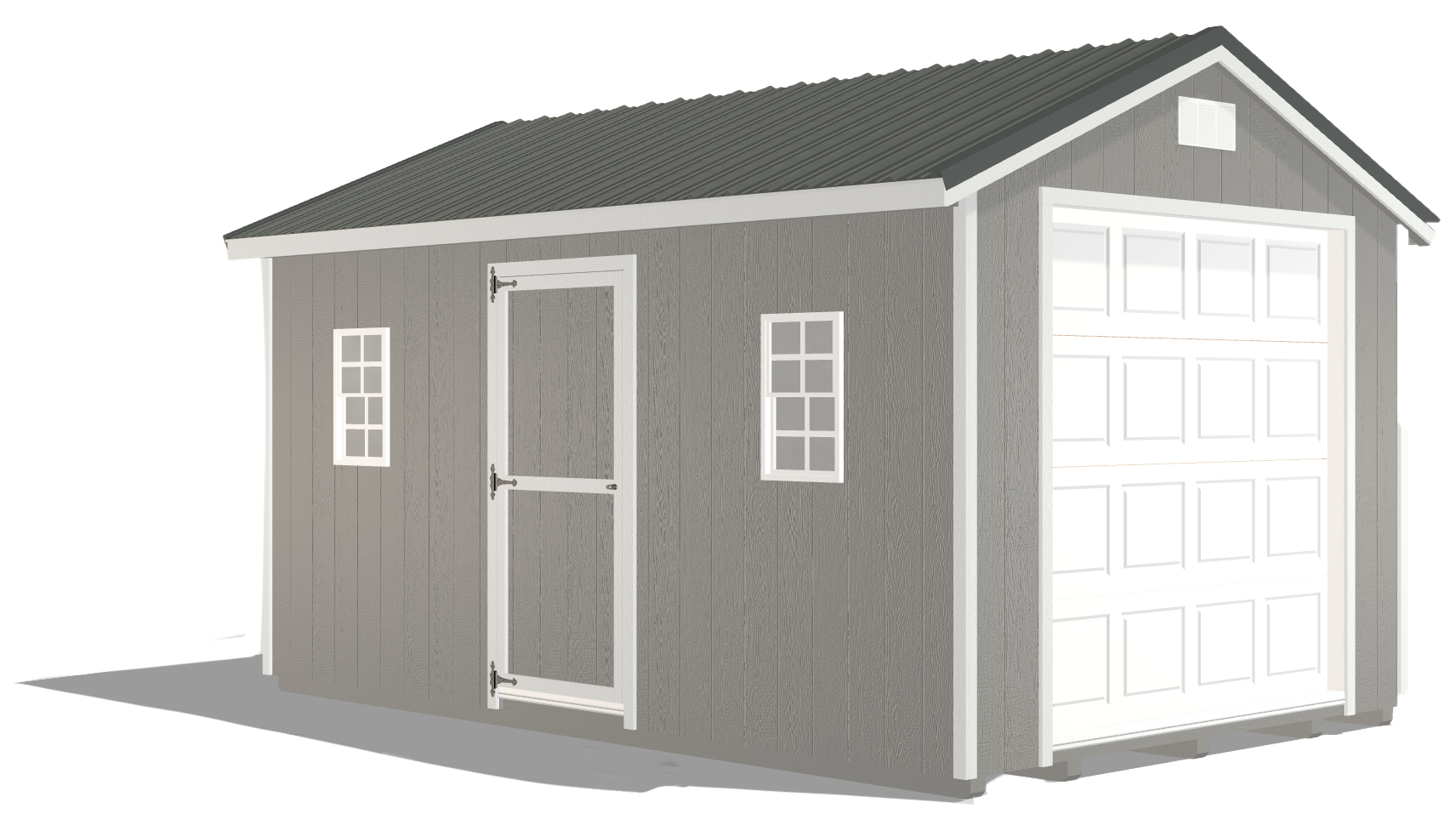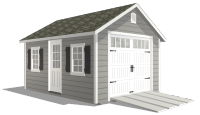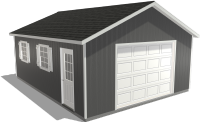Building Green: How Greenhouse Materials Can Impact Longevity
by Dakota Storage Buildings, on September 04, 2024

Greenhouses are crucial tools for gardeners who want to extend the growing seasons. They protect plants from adverse weather conditions and optimize the space for productivity. However, the materials for constructing greenhouses play a large part in determining their longevity and overall performance. The direct correlation between greenhouse materials and their impact on longevity is not widely understood by manufacturers or DIYers. When subpar materials are chosen, it can compromise the durability and sustainability of these structures. Let’s explore the relationship between greenhouse materials and their long-term performance.
How Greenhouse Materials Affect Longevity
The materials used in greenhouse construction play a critical role in determining their longevity. Factors like corrosion resistance, UV degradation, thermal stability, and structural integrity all significantly impact how long a greenhouse will last.
Corrosion Resistance: Greenhouses are exposed to moisture and various chemicals, making corrosion resistance a vital quality for structural materials.
UV Degradation: UV rays can degrade materials over time, particularly plastics and some types of glass.
Thermal Stability: Greenhouses experience significant temperature fluctuations, making thermal stability a critical factor. Materials like polycarbonate and certain types of glass offer better thermal insulation and stability.
Structural Integrity: The ability to withstand environmental stresses such as wind, snow, and heavy rainfall is crucial. High-quality materials that maintain their structural integrity under these conditions ensure the greenhouse remains functional and safe.
Understanding how these factors affect a wooden greenhouse can help you select materials that not only meet immediate needs but also provide long-term reliability. By thoroughly evaluating material properties and their performance under various conditions, greenhouse customers can make informed decisions. Investing in high-quality materials can reduce the frequency of repairs and replacements, ultimately saving time and resources while promoting a stable growing environment for plants.
Choosing the Best Greenhouse Materials
A systematic approach to selecting greenhouse materials involves thoroughly testing them in various environmental conditions to assess their performance and durability. This process helps identify which materials can withstand factors like extreme weather, UV exposure, and moisture.

Glass
Glass has been a traditional choice for greenhouses due to its clarity and aesthetic appeal. It allows maximum light transmission, which is beneficial for plant growth. Glass is also resistant to scratches and maintains its transparency over time. However, it is heavy, which can require a stronger and more expensive frame to support the structure. Additionally, glass greenhouses are more likely to break compared to other materials, which can lead to higher maintenance costs and potential hazards.

Polycarbonate
Polycarbonate is an increasingly popular choice for greenhouse construction due to its excellent thermal insulation properties and durability. This material is lightweight, making it easier to handle and install compared to a glass greenhouse. Polycarbonate is highly resistant to impact and UV degradation, which helps maintain its structural integrity and clarity over time. This material can be found in various forms, such as single, double, or multi-wall sheets, each offering different levels of insulation and strength. This flexibility reduces the risk of breakage, making it a cost-effective and durable option for many gardeners.

Plastics
Plastics, such as polyethylene and polyvinyl chloride (PVC), are commonly used in greenhouse coverings since they are budget-friendly and easy to install. These materials offer good insulation and are relatively lightweight, which simplifies the construction process. However, plastic greenhouses are more susceptible to UV degradation, which can cause them to become brittle and lose their effectiveness over time. To combat this, new coating technologies have been developed to improve the UV resistance of plastic coverings. This helps extend their lifespan and maintain their performance.
Establishing Best Practices for Greenhouse Material Selection
Establishing industry standards and guidelines for material selection and maintenance practices is crucial for ensuring the longevity and sustainability of greenhouses. These standards would provide valuable guidance for both DIYers and professional builders by promoting best practices that enhance the durability and functionality of a greenhouse.
Regular Inspections
Conducting routine inspections is essential for effective maintenance, especially with wooden greenhouses and metal greenhouses. Regular inspections help identify early signs of wear and tear, such as cracks, corrosion, or UV damage. By catching these issues early, greenhouse owners can perform timely maintenance and repairs, preventing minor problems from escalating into major, costly repairs. Inspections should be scheduled seasonally or more frequently in extreme weather conditions to ensure the greenhouse remains in optimal condition.

Maintenance Routines
Implementing consistent maintenance routines preserves the condition of greenhouse materials and extends their lifespan. Regular cleaning to remove dirt, algae, and debris is crucial to maintain light transmission and ventilation. Checking for corrosion and applying protective treatments, like anti-rust coatings or UV protectants, helps mitigate environmental exposure effects. Regular maintenance preserves the structure and creates a healthier environment for plants.
Material Replacements
Understanding the expected service life of wooden greenhouse materials and replacing them as needed is crucial for maintaining the structure's integrity. Different materials degrade at varying rates based on exposure to elements such as sunlight, moisture, and temperature fluctuations. For instance, plastic greenhouse coverings may need more frequent replacement than glass or polycarbonate. Setting a replacement schedule based on manufacturer recommendations and inspections helps you proactively manage the materials.
Embracing New Greenhouse Construction
Greenhouse construction and maintenance practices are continually evolving, with new materials and technologies emerging to address sustainability and durability challenges. Industry standards and guidelines should be regularly reviewed and updated to incorporate these innovations and reflect the latest research findings. Collaborative efforts between researchers, manufacturers, and industry professionals drive continuous improvement in greenhouse design and maintenance practices. This will help ensure greenhouses remain efficient, sustainable, and resilient against changing environmental conditions.
Innovative Greenhouse Designs for Maximum Growth and Sustainability
At Dakota Storage Buildings, we are creating modern greenhouses with durable materials. Our galley and wrap-around greenhouses are designed to optimize space and enhance functionality. These designs focus on maximizing growing areas, improving ventilation, and creating efficient workspaces, all while using materials that promote longevity and sustainability.
Galley Greenhouses

Our galley greenhouses are designed to maximize growing areas by utilizing vertical space and providing ample room for plant growth. These structures have ventilation systems that help maintain optimal growing conditions by ensuring plants receive the right amount of air circulation and humidity. The vertical design also allows for efficient use of space, making it ideal for smaller gardens or urban settings. Our Galley Greenhouse creates a space where plants can thrive in a controlled environment. This design is perfect for gardeners looking to make the most of their available space while maintaining a productive and healthy plant environment.
Wrap-Around Greenhouses

Our wrap-around greenhouses provide a continuous growing space around a central area, making them ideal for larger gardens. These structures enhance workflow efficiency by allowing gardeners to move easily around the plants. The wrap-around design ensures that plants receive consistent light and temperature to promote even growth. The Wrap Around Greenhouse allows you to nurture large and specialty plants, with ample space and thoughtful features like climate control readiness and a generous workspace. The abundant shelving and spacious layout help you complete gardening tasks with ease.
These modern greenhouse designs not only improve the efficiency and productivity of greenhouses but also contribute to sustainability by using materials that last longer and require less frequent replacement, like LP SmartSide® Panel Siding and LP® ProStruct Flooring. By integrating innovative designs and durable materials, these greenhouses support long-term gardening success and environmental responsibility.
Expand Your Greenhouse’s Lifespan With the Right Materials
Choosing a greenhouse that is built with the best materials is critical for ensuring its longevity and sustainability. By understanding how materials affect corrosion resistance, UV degradation, thermal stability, and structural integrity, you can choose a greenhouse that is built with durability in mind. Plus, by following maintenance guidelines, you can ensure that your greenhouse will last for years. Consider adopting sustainable practices, using innovative materials, and exploring modern greenhouse designs to enhance performance and longevity. Customize your own Dakota Storage Building greenhouse and design it for your specific needs to ensure a durable and efficient environment.



